
WATERTON, C. (2007): Od terénu k představám: Klasifikace přírody a vytváření Evropy. Biograf , (43-44): 3-32 - přeložil Zdeněk Konopásek
, (43-44): 3-32 - přeložil Zdeněk Konopásek
::::This paper sets out some observations on the making, and use, of contemporary classifications of nature in the context of a simultaneous and on-going "making" of Europe. It looks in particular at two classifications, one of British vegetation communities and the other of European "biotopes" (a concept that closely relates to natural or semi-natural "habitats") – respectively, the UK National Vegetation Classification (NVC) and the EU CORINE Biotopes Classification. It investigates aspects of the relationship between these two classifications which has come about through their use in a European conservation policy. The CORINE Biotopes classification, in particular, represents a new ordering of nature in a very active sense: it is a good example of a "working archive", and is intimately tied into policy decisions at many levels in Europe. The paper addresses questions as to how contemporary classifications are being made and used, and whether certain tacit understandings and conceptual frameworks "built in" to them reflect back upon the world at a later stage. It argues that these classifications do not always simply reflect the assumptions and understandings built into them: once in the policy domain, they are not as "reversible" as that. Their categories quickly become unstable, mutating and interacting in sometimes unpredictable ways. The two classifications, through their relationship with policy, have a jointly evolving history. The continual renewal of meaning attached to classes within these classifications appears to reflect outwards rather than inwards – in chorus with the broader social and political context, rather than reflecting the condition of their making. In their evolving forms, they illustrate very well the complex nature of the dynamic between unity and diversity, centre and periphery, that lies at the heart of the European Union.
Přeloženo z originálu WATERTON, C. (2002): From field to fantasy: Classifying nature, constructing Europe. Social Studies of Science, 32 (2): 177-204
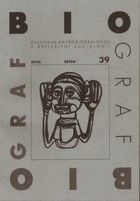
SHOVE, E. / SOUTHERTON, D. (2006): Mrazák dobře rozmrazený: Od novosti k pohodlí (příběh normalizace). Biograf , (39): 3-21 - přeložil Zdeněk Konopásek
, (39): 3-21 - přeložil Zdeněk Konopásek
::::This article examines the "normalization" of the British freezer. It defines three phases in this process: an initial period oriented around the utility of preserving home produce; a second stage marked by the development of a frozen food infrastructure and the establishment of the freezer as a part of the efficient domestic economy; and a third subtle but significant redefinition of the primary benefits of freezing in terms of convenience. Cast in their new role as "time machines", freezers are sold as a means of managing contemporary pressures associated with the scheduling and co-ordination of domestic life. At one level, this is a story of the gradual acceptance of a relatively standardized object. Yet this narrative suggests that the freezer´s promised benefits and functions change along the way. Developing this point, we argue that the normalization of the chameleon-like freezer can only be understood in the context of similarly changing systems of food provisioning, patterns of domestic practice and allied technological devices.
Translated from SHOVE, E. / SOUTHERTON, D. (2000): Defrosting the freezer - from novelty to convenience: A narrative of normalization. Journal of Material Culture, 5 (3): 301-319
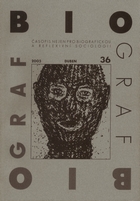
DAVID, G. (2005): Žertování o cenách v arabských koloniálech: Jak mohou citlivá témata proměňovat mezi-skupinové vztahy. Biograf , (36): 25-54 - přeložil Zdeněk Konopásek
, (36): 25-54 - přeložil Zdeněk Konopásek
::::Tensions between small immigrant-owned stores and their African-American customers are frequently cited as a major problem in large urban cities in the United States. Whereas most research has focused on the problematic nature of this relationship, the research reported in this paper attempts to focus on the positive. Rather than being plagued by tensions and problematic encounters, this paper asserts that interactions in small "convenience stores" are largely unproblematic. This paper examines the occurrence of unproblematic cross-cultural encounters as a collaborative effort between customer and worker. Specifically, this paper demonstrates how humor plays an important role in the formation of positive relationships through the analysis of "price humor". While high prices have been cited as a source of tension, this paper shows how sensitive topics, such as price, can be used by interactants to build rapport across the counter.
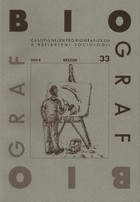
PREDA, A. (2004): Finanční vědění, dokumenty a struktury finančních činností. Biograf , (33): 3-29 - přeložili Zdeněk Konopásek a Jiřina Zachová
, (33): 3-29 - přeložili Zdeněk Konopásek a Jiřina Zachová
::::Starting from participant observation and interviews conducted in several European banks, the article examines how financial knowledge is constituted in the process of producing documents like research reports, analyses, and newsletters. The core argument is that documents act as organizational devices, with the help of which relationships are created, maintained, and managed across various contexts. In this perspective, the production of financial reports, analyses, and newsletters creates (1) knowledge-based networks of social relationships in which financial action is embedded and (2) stable temporal structures, thus ensuring the continuity of financial activities. On these grounds, the author argues here that knowledge-generating processes should be taken into account as an essential dimension of the structural embeddedness of financial action.
Přeloženo z originálu PREDA, A. (2002): Financial knowledge, documents, and the structures of financial activities. Journal of Contemporary Ethnography, 31 (4): 207-239

GUILLEMIN, M. / GILLAM, L. (2004): Etika, reflexivita a "eticky důležité okamžiky" ve výzkumu. Biograf , (35): 11-31 - přeložili Zdeněk Konopásek a Jiřina Zachová
, (35): 11-31 - přeložili Zdeněk Konopásek a Jiřina Zachová
::::Ethical tensions are part of the everyday practice of doing research—all kinds of research. How do researchers deal with ethical problems that arise in the practice of their research, and are there conceptual frameworks that they can draw on to assist them? This article examines the relationship between reflexivity and research ethics. It focuses on what constitutes ethical research practice in qualitative research and how researchers achieve ethical research practice. As a framework for thinking through these issues, the authors distinguish two different dimensions of ethics in research, which they term procedural ethics and "ethics in practice". The relationship between them and the impact that each has on the actual doing of research are examined. The article then draws on the notion of reflexivity as a helpful way of understanding both the nature of ethics in qualitative research and how ethical practice in research can be achieved.
Přeloženo z originálu GUILLEMIN, M. / GILLAM, L. (2004): Ethics, reflexivity, and "ethically important moments" in research. Qualitative Inquiry, 10 (2): 261-280
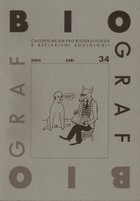
BERG, M. / BOWKER, G.C. (2004): Rozmanitá těla zdravotní dokumentace: K sociologii jednoho nástroje. Biograf , (34): 3-34 - přeložil Zdeněk Konopásek
, (34): 3-34 - přeložil Zdeněk Konopásek
::::This article argues that the medical record is an important focus for sociological research. In medical work, the modern patient´s body that Foucault has so aptly described is produced through embodied, materially heterogeneous work, and the medical record plays a crucial role in this production. It does not simply represent this body´s history and geography; it is a central element in the material rewriting of these. Simultaneously, the record fulfills a core role in the production of a body politic. As the record is involved in the performance of the patient´s body, it is also involved in the performance of the clinic in which that body comes to life. Finally, we argue that different records and different practices of reading and writing are intertwined with the production of different patient´s bodies, bodies politic, and bodies of knowledge. As organizational infrastructure, the medical record affords the interplay and coordination of divergent worlds. Seen as a site where multiple stories about patients and organizations are at stake, including the interoperability between these stories, the medical record becomes highly relevant both analytically and politically.
Přeloženo z originálu BERG, Marc / BOWKER, Geoffrey C. (1997): The multiple bodies of the medical record: Toward a sociology of an artifact. Sociological Quarterly, 38 (3): 513-537
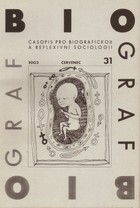
MOL, A. / LAW, J. (2003): Vtělené jednání, zjednávaná těla: příklad hypoglykémie. Biograf , (31): 5-25
, (31): 5-25
::::We all know that we have and are our bodies. But might it be possible to leave this common place? In the present article we try to do this by attending to the way we do our bodies. The site where we look for such action is that of handling the hypoglycaemias that sometimes happen to people with diabetes. In this site it appears that the body, active in measuring, feeling and countering hypoglycaemias is not a bounded whole: its boundaries leak. Bits and pieces of the outside get incorporated within the active body; while the centre of some bodily activities is beyond the skin. The body thus enacted is not self-evidently coherent either. There are tensions between the body's organs; between the control under which we put our bodies and the erratic character of their behaviour; and between the various needs and desires single bodies somehow try to combine. Thus to say that a body is a whole, or so we conclude, skips over a lot of work. One does not hang together as a matter of course: keeping oneself together is something the embodied person needs to do. The person who fails to do so dies.
MOL, A. / LAW, J. (2004): Embodied action, enacted bodies: The example of hypoglycaemia. Body & Society, 10 (2-3): 43-62
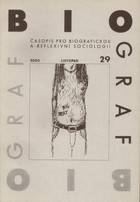
LATOUR, B. (2002): Když věci vracejí úder: Co mohou sociálním vědám přinést "vědní studia". Biograf , (29): 3-20 - přeložil Zdeněk Konopásek
, (29): 3-20 - přeložil Zdeněk Konopásek
::::The contribution of the field of science and technology studies (STS) to mainstream sociology has so far been slim because of a misunderstanding about what it means to provide a social explanation of a piece of science or of an artefact. The type of explanation possible for religion, art or popular culture no longer works in the case of hard science or technology. This does not mean, it is argued, that science and technology escapes sociological explanation, but that a deep redescription of what is a social explanation is in order. Once this misunderstanding has been clarified, it becomes interesting to measure up the challenge raised by STS to the usual epistemologies social sciences believed necessary for their undertakings. The social sciences imitate the natural sciences in a way that render them unable to profit from the type of objectivity found in the natural sciences. It is argued that by following the STS lead, social sciences may start to imitate the natural sciences in a very different fashion. Once the meanings of "social" and of "science" are reconfigured, the definition of what a "social science" is and what it can do in the political arena is considered. Again it is not by imitating the philosophers of science's ideas of what is a natural science that sociology can be made politically relevant.
LATOUR, B. (2000): When things strike back: A possible contribution of "science studies" to the social sciences. The British Journal of Sociology, 51 (1): 107-123
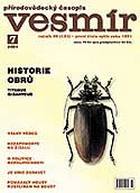
LATOUR, B. (2001): Nepřehlédněme žížalu Pontoscoles corethrurus. Vesmír, 80 (7): 383-85 - přeložili Zdeněk Konopásek a David Storch
::::Překlad článku: LATOUR, B. (nedat.): Let’s us not overlook the earthworm Pontoscolex corethrurus. Rukopis, dostupné na adrese http://bruno.latour.fr
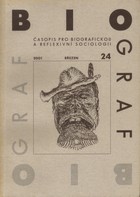
FINE, G.A. (2001): Jak se dělá příroda a ochočuje divočina: Problém "vysbírávání" lesů v houbařské kultuře. Biograf , (24): 29-56 - přeložil Zdeněk Konopásek
, (24): 29-56 - přeložil Zdeněk Konopásek
::::Although nature often has been treated as an unproblematic reality, I argue for treating it as a contested concept, suggesting that "nature" is a cultural construction. Drawing on interactionist and ecological theory, I claim that the creation of social problems involving the environment is inevitably grounded in cultural choices. Through a set of ideological structures (a protectionist vision, an organic vision, and a humanistic vision), social actors develop templates for understanding the proper relationship between humans and nature. Based on an ethnography of mushroom collecting, I contend that these models lead us to experience nature through cultural eyes - wishing to be away from civilization, to be at one with nature, and to engage in the pragmatic use of nature for personal ends. Conflicting stances toward nature account for debate over the moral acceptability of the commercial collection of mushrooms and the "problem" of overpick. Templates of human-environmental interaction, leading to models for experiencing the wild, provide the basis for understanding the conditions under which environmental change is defined as a social problem.
FINE, G.A. (1997): Naturework and the taming of the wild: The problem of "overpick" in the culture of mushroomers. Social Problems, 44 (1): 68-88

ASHMORE, M. / REED, D. (2001): Nevinnost a nostalgie v konverzační analýze: dynamické vztahy mezi nahrávkou a jejím přepisem. Biograf, (25): 3-23 - přeložili Lenka Buštíková, Zdeněk Konopásek a Ivan Vodochodský
::::This paper attempts an analysis of some of the methodological practices of Conversation Analysis (CA); in particular, tape recording and transcription. The paper starts from the observation that, in the CA literature, these practices, and the analytic objects they create (the tape and the transcript), are accorded different treatment: simply put, for CA the tape is a "realist" object, while the transcript is a "constructivist" one. The significance of this difference is explored through an analysis of the dynamics of CA practice. We argue that the "constructivist transcript" is premised on an understanding of CA as predominantly concerned with maximising its "analytic utility": a concern of one distinct temporal stage of CA work: that of the "innocent" apprehension of objects in the "first time through". The "realist tape", in contrast, is based on a different aspect of the work of CA: its quest for greater "evidential utility", achieved by the "nostalgic" revisiting of previously produced objects for purposes of checking them against each other; work done in the "next time through". We further argue that both the ontology and the epistemology of CA[a]s objects are changed in any next time encounter. We conclude with a cautionary speculation on the currently-projected, transcript-free, digital future of CA.
ASHMORE, M. / REED, D. (2000): Innocence and nostalgia in conversation analysis: The dynamic relations of tape and transcript. Forum Qualitative Sozialforschung / Forum: Qualitative Social Research, 1(3): 45 odst., čl. 3. Dostupné na adrese http://nbn-resolving.de/urn:nbn:de:0114-fqs000335
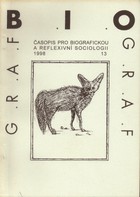
ATKINSON, P. / SILVERMAN, D. (1998): Kunderova Nesmrtelnost: Interview society a vynalézání Já. Biograf , (13): 1-25 - přeložili Lukáš Gjurič a Zdeněk Konopásek
, (13): 1-25 - přeložili Lukáš Gjurič a Zdeněk Konopásek
::::Milan Kundera[a]s novel Immortality bears a dose relation to con temporary social science debates about the production of the self. Commentators like Kleinman and Mishler seem to have introduced a new version of authenticity based on a reinvention of the Romantic subject with the interview (as the medium) and the narrative (as the content) portrayed as the means for constructing and sharing biographical experience. Unlike such contemporary Romantics, Kundera examines how the subject is constructed in literary biography and mass media "imagology". The authors show how Kundera[a]s work leads in two possible directions: an analysis of the interview society and a concern with strategies for the invention of the self. By locating styles of the self, the authors reveal lively and skillful biographical work, overlooked by cultural critique and not reducible to any structural determinism.
ATKINSON, P. / SILVERMAN, D. (1997): Kundera's Immortality: The interview society and the invention of the self, Qualitative Inquiry, 3 (3): 304-325

MOSER, I. / LAW, J. (1998): Přechody snadné, přechody nesnadné: o heterogenní ekonomii subjektivity. Biograf , (15-16): 5-28 - přeložil Zdeněk Konopásek
, (15-16): 5-28 - přeložil Zdeněk Konopásek
::::This text explores the relation between subjectivities, materialities (including technological arrangements) and bodily competencies. Starting from the assumption that all material and bodily arrangements are specific, it considers some of those specifities, and the "passages" through which these specific arrangements are fitted together for a particular person, Liv, who is physically disabled. It explores the character of some Liv[a]s "passages" - some are "good", some "bad", some public, and some discrediting - and the ways in which they are shaped to produce personal and biographical continuity and relative autonomy for her - an autonomy and capacity discretionary decision making which she highly values. The paper thus uses some of the tools developed in the actor-network approach, but also in feminism, to interpret the material and corporeal relations involved in the formation of contemporary subjectivities.
MOSER, I. / LAW, J. (1999): Good passages, bad passages. In: J. Law, J. Hassard, editors: Actor network theory and after. Oxford: Blackwell & Sociological Review. Str. 196-219
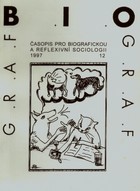
FISCHER-ROSENTHAL, W. (1997): Problémy s identitou: biografie jako řešení některých (post)moderních dilemat. Biograf , (12): 1-18 - přeložil Zdeněk Konopásek
, (12): 1-18 - přeložil Zdeněk Konopásek
::::Přeloženo z původního článku: FISCHER-ROSENTHAL, W. (1995): The problem with identity: Biography as solution to some (post)modernist dilemmas. Comenius, (15): 250-265
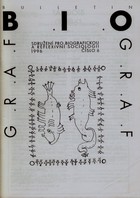
ANDRLE, V. (1996): Muži na svém místě: legitimizační témata v autobiografickém vyprávění elitních podnikatelů s minulostí "starých struktur". Biograf Bulletin, (6): 17-27 - přeložil Zdeněk Konopásek
::::Based on a business élite subsample of biographical interviews, the article explores the ways in which respondents who had had high executive positions in the communist state sought to imbue that fact as well as their post-revolutionary wealth acquisition with a sense of post-revolutionary legitimacy. a) They dissociated themselves from the communist regime by claiming that oppressive power was located in other offices than the ones they occupied; b) they presented their careers as ones which enabled them to accumulate expertise relevant to doing well in the market economy; c) they presented themselves as ancestrally linked to the first-republic bourgoisie and personally connected with the current (supposedly liberal-democratic) government; d) they drew on the collective memory of previous revolutions to dismiss their militant critics.

 ? - recenze vyjde v časopise Biograf
? - recenze vyjde v časopise Biograf
 se objevily informace o tom, co lze snad prý během března čekat v nové, sedmé verzi mého oblíbeného analytického programu
se objevily informace o tom, co lze snad prý během března čekat v nové, sedmé verzi mého oblíbeného analytického programu














